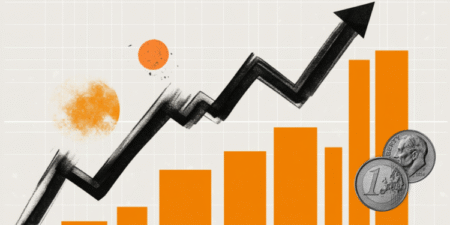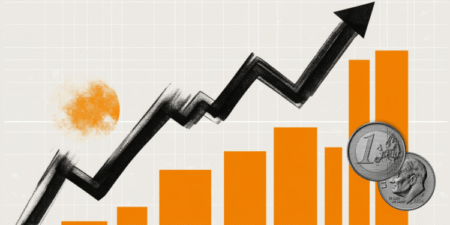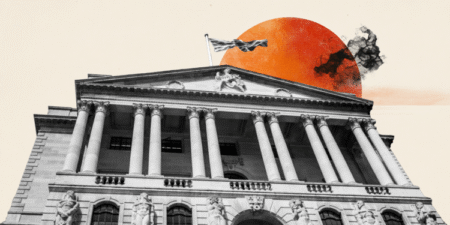- The Federal Reserve is expected to leave the policy rate unchanged for the third consecutive meeting.
- Fed Chairman Powell will speak on the policy outlook in a press conference.
- The US Dollar could stay resilient against its rivals if the Fed keeps its focus on the inflation outlook.
The United States (US) Federal Reserve (Fed) will announce monetary policy decisions following the May policy meeting on Wednesday. Market participants widely anticipate the US central bank will leave policy settings unchanged for the fourth consecutive meeting, after cutting the interest rate by 25 basis points (bps) to the 4.25%-4.5% range in December.
The CME FedWatch Tool shows that investors virtually see no chance of a rate cut in May, while pricing in about a 30% probability of a 25 bps reduction in June. Hence, market participants will scrutinize the changes in the policy statement and comments from Fed Chairman Jerome Powell in the post-meeting press conference for fresh hints on the timing of the next rate cut.
Before the Fed went into the blackout period, several policymakers voiced their concerns over the uncertainty created by the US’ new trade regime weighing on the labor market.
Minneapolis Fed President Neel Kashkari said that some businesses indicate that they are preparing for possible job cuts if uncertainty continues. Similarly, Fed Governor Christopher Waller told Bloomberg that he wouldn’t be surprised to see more layoffs and higher unemployment, adding that rising unemployment could pave the way for rate cuts. As the Bureau of Labor Statistics reported that Nonfarm Payrolls rose by 177,000 in April, surpassing the market expectation of 130,000, and the Unemployment Rate remained unchanged at 4.2%, investors turned reluctant to price in a rate cut in June.
Previewing the Fed’s May meeting, analysts at Danske Bank said, “We expect the Fed to maintain its monetary policy unchanged in the May meeting, in line with consensus and market pricing.”
“While we expect the Fed to resume cutting rates in June, we doubt Powell will opt for clear forward guidance amid the tariff uncertainty. Growth risks remain tilted to the downside, but rising inflation expectations are still a concern,” the analysts added.
Economic Indicator
Fed Interest Rate Decision
The Federal Reserve (Fed) deliberates on monetary policy and makes a decision on interest rates at eight pre-scheduled meetings per year. It has two mandates: to keep inflation at 2%, and to maintain full employment. Its main tool for achieving this is by setting interest rates – both at which it lends to banks and banks lend to each other. If it decides to hike rates, the US Dollar (USD) tends to strengthen as it attracts more foreign capital inflows. If it cuts rates, it tends to weaken the USD as capital drains out to countries offering higher returns. If rates are left unchanged, attention turns to the tone of the Federal Open Market Committee (FOMC) statement, and whether it is hawkish (expectant of higher future interest rates), or dovish (expectant of lower future rates).
Read more.
Next release:
Wed May 07, 2025 18:00
Frequency:
Irregular
Consensus:
4.5%
Previous:
4.5%
Source:
Federal Reserve
When will the Fed announce its interest rate decision and how could it affect EUR/USD?
The US Federal Reserve is scheduled to announce its interest rate decision and publish the monetary policy statement on Wednesday at 18:00 GMT. This will be followed by Fed Chairman Jerome Powell’s press conference starting at 18:30 GMT.
Investors will pay close attention to how the Fed and Chairman Powell assess the latest economic developments. Although the April employment report showed that conditions in the labor market remain relatively healthy, the Bureau of Economic Analysis reported in its flash estimate that the US’ Gross Domestic Product (GDP) contracted at an annual rate of 0.3% in the first quarter.
In case the Fed acknowledges a heightened risk of a recession and its potential negative impact on hiring, investors could see that as a dovish language. In this scenario, the US Dollar (USD) could come under renewed selling pressure. On the other hand, investors could refrain from pricing in a rate cut in June and help the USD outperform its rivals, if the Fed downplays growth concerns and implies that it will remain patient about policy adjustments while waiting to see how tariffs will impact inflation.
Eren Sengezer, European Session Lead Analyst at FXStreet, provides a short-term technical outlook for EUR/USD:
“The near-term technical outlook points to a loss of bullish momentum, with the Relative Strength Index (RSI) indicator on the daily chart retreating toward 50. Additionally, EUR/USD trades near the 20-day Simple Moving Average (SMA) after holding comfortably above this level throughout April.”
“On the downside, the Fibonacci 23.6% retracement level of the uptrend that started in January forms key support at 1.1200. In case EUR/USD makes a daily close below this level and starts using it as resistance, technical sellers could remain interested, opening the door for an extended slide toward 1.1015-1.1000 (Fibonacci 38.2% retracement, round level, 50-day SMA) and 1.0860 (Fibonacci 50% retracement). Looking north, interim resistance could be spotted at 1.1440 (static level) before 1.1520 (end-point of the uptrend) and 1.1600 (round level, static level).”
Fed FAQs
Monetary policy in the US is shaped by the Federal Reserve (Fed). The Fed has two mandates: to achieve price stability and foster full employment. Its primary tool to achieve these goals is by adjusting interest rates.
When prices are rising too quickly and inflation is above the Fed’s 2% target, it raises interest rates, increasing borrowing costs throughout the economy. This results in a stronger US Dollar (USD) as it makes the US a more attractive place for international investors to park their money.
When inflation falls below 2% or the Unemployment Rate is too high, the Fed may lower interest rates to encourage borrowing, which weighs on the Greenback.
The Federal Reserve (Fed) holds eight policy meetings a year, where the Federal Open Market Committee (FOMC) assesses economic conditions and makes monetary policy decisions.
The FOMC is attended by twelve Fed officials – the seven members of the Board of Governors, the president of the Federal Reserve Bank of New York, and four of the remaining eleven regional Reserve Bank presidents, who serve one-year terms on a rotating basis.
In extreme situations, the Federal Reserve may resort to a policy named Quantitative Easing (QE). QE is the process by which the Fed substantially increases the flow of credit in a stuck financial system.
It is a non-standard policy measure used during crises or when inflation is extremely low. It was the Fed’s weapon of choice during the Great Financial Crisis in 2008. It involves the Fed printing more Dollars and using them to buy high grade bonds from financial institutions. QE usually weakens the US Dollar.
Quantitative tightening (QT) is the reverse process of QE, whereby the Federal Reserve stops buying bonds from financial institutions and does not reinvest the principal from the bonds it holds maturing, to purchase new bonds. It is usually positive for the value of the US Dollar.
(This story was corrected on May 7 at 11:13 GMT to say, in the first bullet, that the Fed is expected to hold interest rates steady for a third consecutive meeting, not a fourth.)
Read the full article here
















